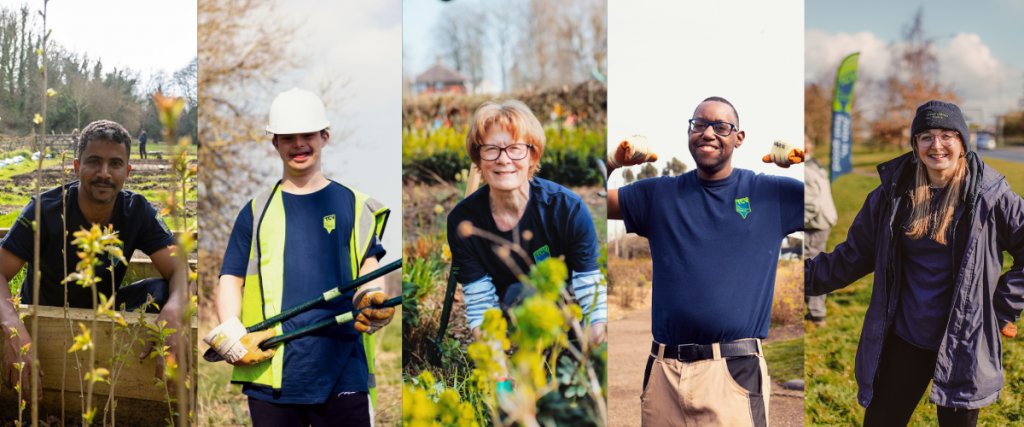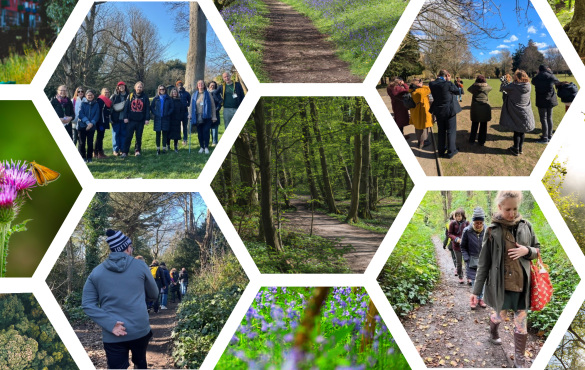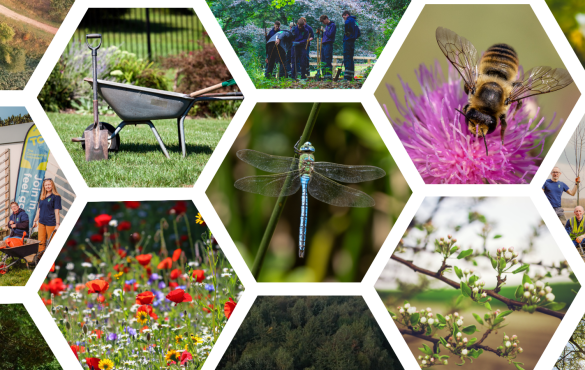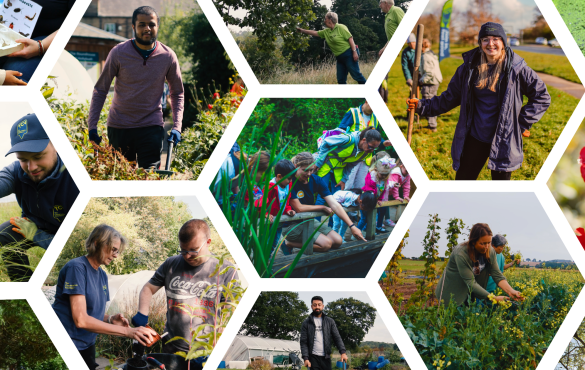In the conservation sector, women have played a pivotal role, often driving local impactful changes that resonate far wider and contribute to a global movement – thinking globally, while acting locally. Their stories are as diverse as the ecosystems they work tirelessly to protect.
The Conservation Volunteers’ Women in Conservation series delves into fascinating stories of efforts, achievements, and challenges faced along the way. This unique collection of stories not only shines a light on their exceptional contributions or aspirations, but also serves as a wellspring of inspiration for the next generation of conservationists. Join us as we celebrate their dedication to nature and often pioneering spirit, defining the landscape of environmental conservation in local green spaces.
When we spoke to Rebeka Clark she was just back from visiting her mother who lives on a barge on the Oxford Canal. We caught up with her to hear about how she and her volunteer team have brought a vibrant community together in Southeast London to impact on biodiversity in the area. So much so, that the wildlife it supports is spilling over to neighbouring areas, and with big plans afoot to connect up local habitats further…
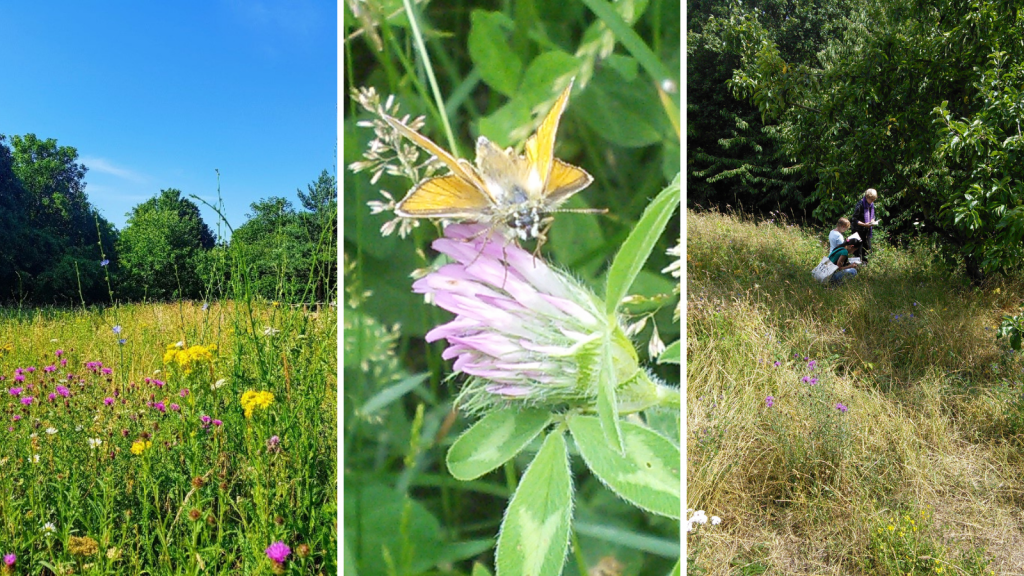
What roles have you held at The Conservation Volunteers (TCV) over the past 35 years?
OK, so my name is Rebeka.
I am currently the Senior Project Officer at Stave Hill Ecology Park in Southeast London. I started off as an assistant site warden and then went on to become an interim site warden because the original site warden left after six months to do occupational therapy.
Along the way, I have been, and still am, a trainer, assessor, health and safety rep. Oh gosh, what else have I done? I have been a maintenance engineer for the Stave Hill Sewerage Pumps. I’ve cooked lunches. I’ve done just about everything really that you need to run a site, including planting some trees along the way.
What initially drew you to a career in environmental conservation, and how has your passion for this field grown and evolved throughout your work at Stave Hill Ecology Park?
Well, I have to be completely honest here. What drew me first was the idea of a guaranteed wage, which I really needed at that time. I needed to get a cushion of money together because my plan was to do this for maybe a year and a half tops. And then I was going to go travelling for two years. I was going to practice my colloquial French and German, then I was going to live in Spain, learn Spanish. Then I was going to come back, take up a University place and study linguistics and philology because language was and always has been a bit of a passion of mine, and I wanted to study how it worked, what it was used for, how it influenced events.
So that’s what I was going to do…
But after three months, three months working at Stave Hill, the people I was working with, people like Doctor David Goode of the London Ecology Unit and Dr. Ian Barrett, who was becoming very influential in the whole Sustainable Cities initiative, they were just so passionate about what they wanted to achieve, and they had such a communicable vision that I was absolutely entranced.
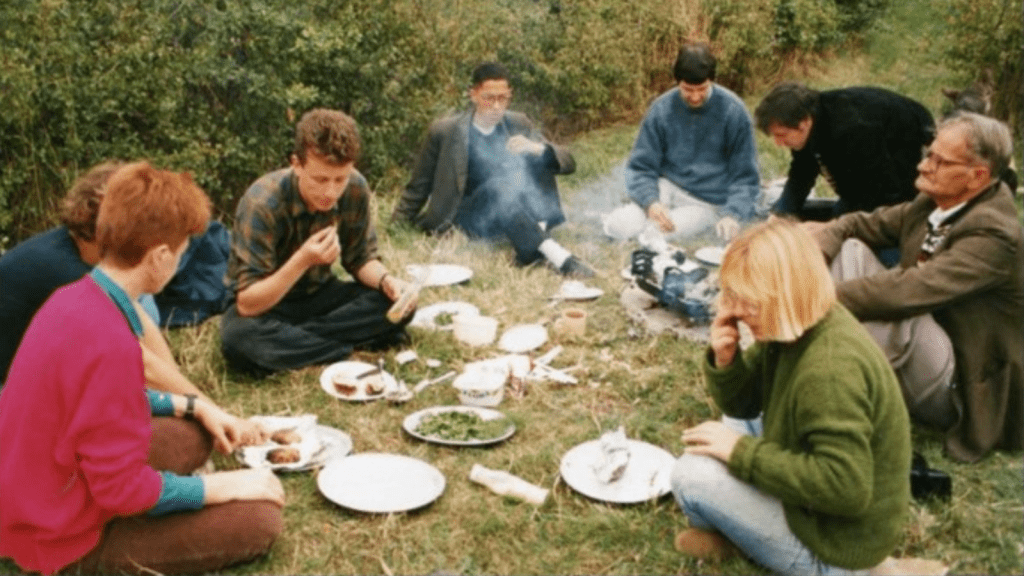
I thought this was fantastic. This was summer, this was so exciting, and there were challenges every day.
And then when the original site warden left, and myself and the other site warden were just left to get on with it. And I had access to all these books, access to all this knowledge. And Dr. Barrett was a “don’t ask me what to do, tell me what you’re doing” sort of person. And, um, yes, they kept a really good guiding hand on the tiller.
I would study for a month on how to cut meadows, and then I would go out and do it. And it was a steep learning curve, but it was such fun, and the challenges were just brilliant. It was such an amazing job and that whole envision of creating liveable cities. I just thought, “Oh yes, I want be part of that.”
Can you tell us about the Stave Hill Ecology Park project, including your surrounding neighbourhood?
We’re situated in Southwark, London on a rather elevated peninsula, very close to the Thames. It’s just a brief 10-minute stroll to reach the Thames foreshore from our location.
The thing to really know about Stave Hill Ecology Park is that it’s wholly man-made. It is a site built on reclaimed docks, and nowadays, creating a natural landscape on brownfield land is normal, and people do it all the time. But back in 1984, it was groundbreaking, and Stave Hill was absolutely the first of its kind, this man-made countryside.
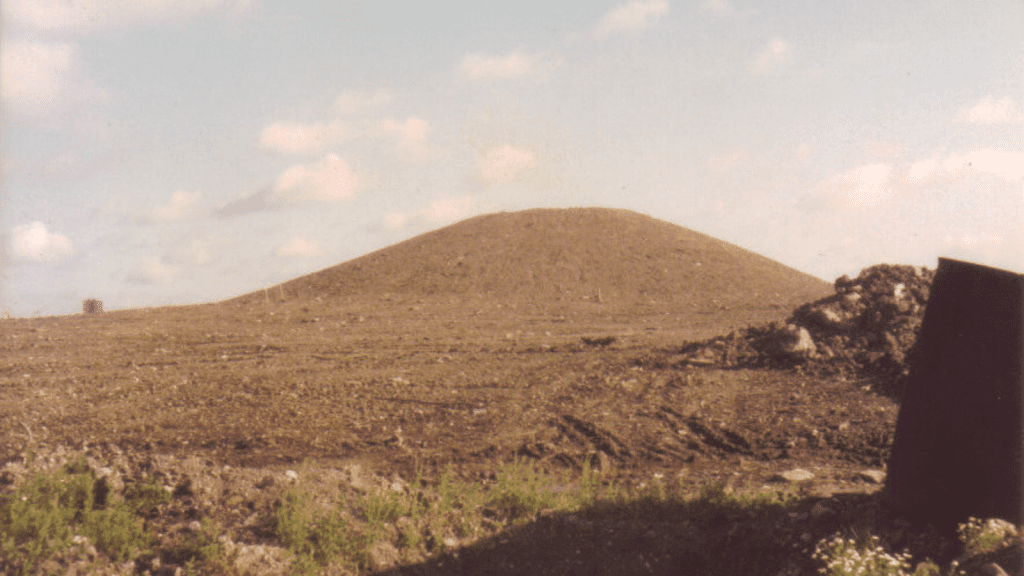
So, you have this new baby park in London which is not actually looking like anything anybody has ever seen before. And with a fairly well-established but small community around it. And they’re looking at this park, which in their eyes is not a park, and they’re asking me all sorts of questions, and they’re not holding back on their commentary.
For example, the park was opened to the public in 1988, and I think it was in the autumn of 88 that I started cutting the meadows, and immediately I got a barrage of: “About time you cut that grass, it was a right mess, It hasn’t been cut since the place was created!”
The following year I went out and I cut the meadows, and it was: “Oh my, why have you cut down all the flowers? They were so lovely.”
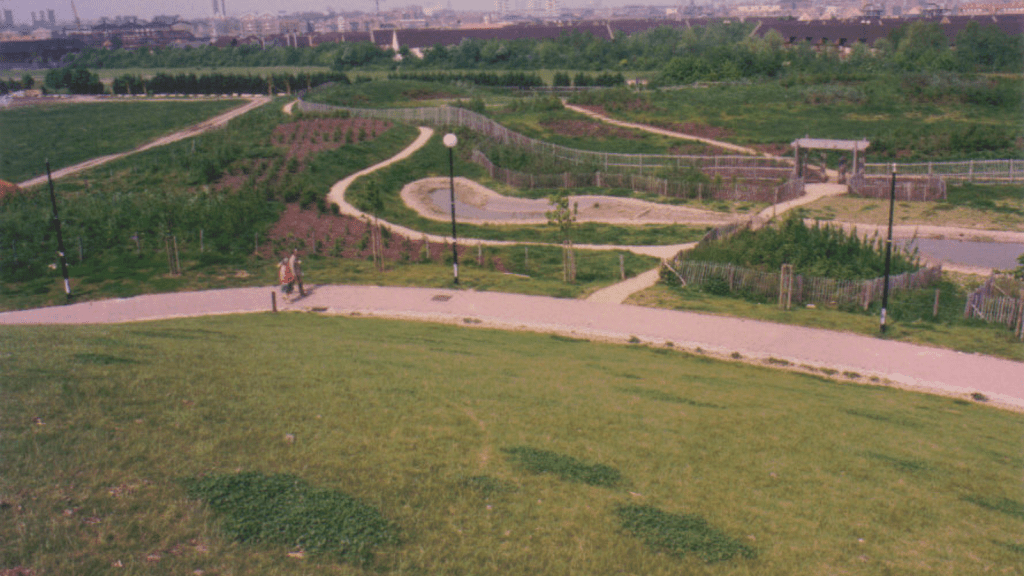
And so, we started building up communications. We told people all the time, every time, what we were doing, why we were doing it, how it was going to have an impact in the short term and the long term.
And so that really, in a nutshell, is Stave Hill. We now have many local residents and community members who, when we cut down trees, understand our intentions. When we establish a Stag Beetle Loggery, they don’t immediately go on Twitter exclaiming, “Oh my, look at all these tree stumps. They’ve cut down a gazillion trees.” Instead, they say, “Oh, look, another Stag Beetle Loggery.”
So, in essence, Stave Hill is a piece of natural countryside that local residents have grown up with. They’ve witnessed its transformation from a bare landscape to what it is today. It’s a highly natural, wild, and biodiverse countryside. It’s a place where this London community has actively contributed to building, creating and maintaining, and where they are genuinely invested in it.
Because the site is open to the public 24/7, because the local community have invested so much in it, and it is so much a part of the fabric of the community, I think that is why we have been able to become so biodiverse so quickly.
I describe it as a green interface, a space where people and nature seamlessly connect. People engage with nature, and nature reciprocates this connection. Not everyone wants to plant trees or become deeply involved in bird watching. The Ecology Park attracts people in various ways and on different levels, embodying the concept of a green living room for the community.
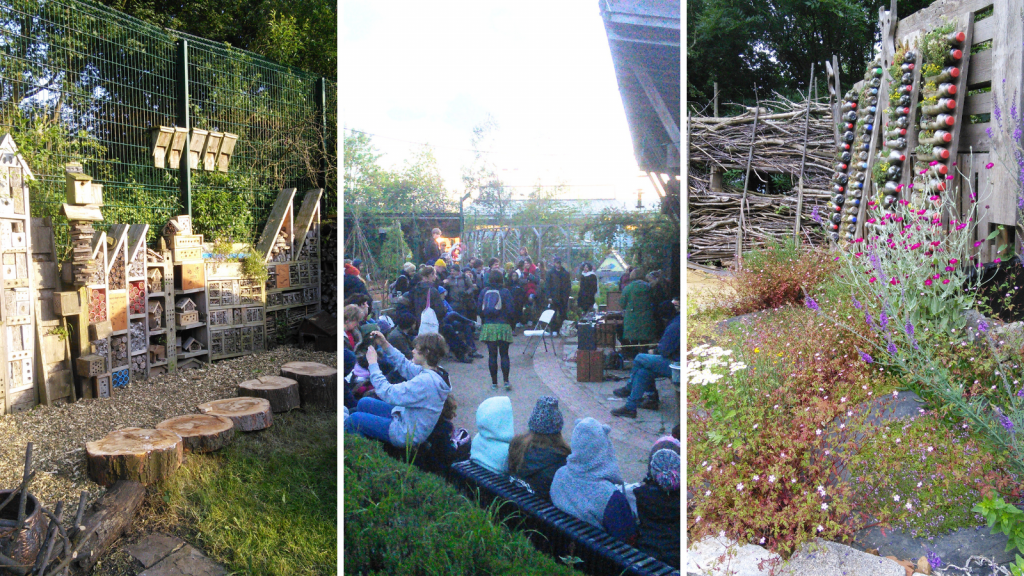
It’s only been 40 years really, but already we have over 179 species of fungi on site. One of those species has only been found at 48 other sites in the whole of the UK. We also have the Yellow Loose Strife Bee. Ours was the first recording in London of it breeding within the M25. Now it’s also at Lavender Pond!
We are a great site for birds. We’ve had short-eared owls, we have had Shrike and Woodcock coming through and Yellow Browed Warblers. It is a paradise for birders, and we have a really great range of wildflowers in our meadows.
We are just becoming so biodiverse, and the Ecology Park has, for 40 years, been leaking out that biodiversity to the surrounding landscape, so that biodiversity is not confined within our 5 1/2 acres. It is spreading, and that is also supporting the new plan for London, which is to create these green corridors from the Thames towards outer London.
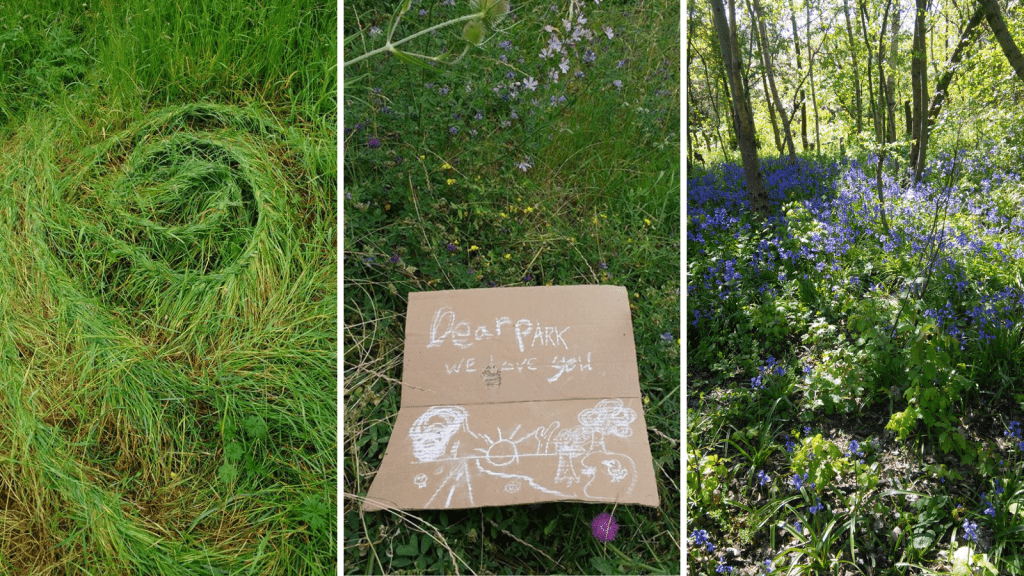
What advice would you give to others aspiring to make a difference in the field of environmental conservation in a city environment?
You have to keep it firmly in your head all the time who we are and what we do in The Conservation Volunteers. We are working to create happier communities, healthier communities. Sometimes I do have a bit of a chuckle because all of this new research coming out post-COVID and, drama, what a surprise. “People with access to nature have been happier and healthier” and we’ve known that for years in TCV and at Stave Hill. I’ve seen it in operation, and I have had people, local residents talking to me and saying the reason that they love this place is because it’s so friendly.
People naturally engage in conversations—it’s a human thing, a bit of gossip here and there. These connections are vital, and creating a space where people feel safe connecting is key. So, when thinking about what we do, consider how to achieve this. Making green spaces accessible means more than just smooth paths; it’s about recognizing diverse interests.
Not everyone is a tree hugger or into butterflies. Some just enjoy being here, strolling, reading a newspaper, sometimes with a can of beer. The important thing is they’re present, engaging with the space.
Keeping this in mind, create opportunities for involvement beyond formal volunteering. People walk their dogs, pick up litter, or tidy paths with secateurs, fostering small stakeholder engagements that lead to more significant contributions and a sense of ownership. We only have one litter bin on site!
In essence, it’s about understanding and embracing varied interests, creating inclusive opportunities, and ensuring the community feels a genuine connection to the space. This, I believe, is the core of our efforts. And I think we really need to keep that in mind.
You can enhance awareness by putting up posters showcasing butterflies and spring flowers in the park. Providing detailed information deepens visitors’ understanding. Fundamentally though, it comes down to providing a space where they feel they can offer to help.
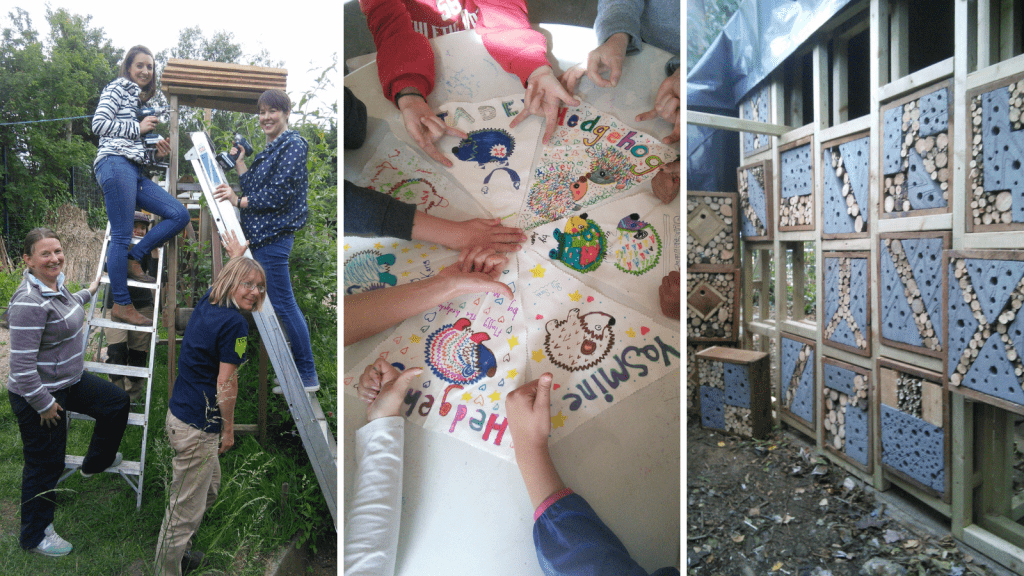
How has the landscape of conservation and environmental work changed over the years, and what do you see as the most pressing challenges and opportunities for the next generation of environmentalists in urban areas?
So, I can only really speak about urban ecology because that’s been my experience. When I started, it was very much practical work, practical conservation, and there wasn’t as much consultation and conversation as there is now. That’s been a very slow build, but it is happening now, which I think is fantastic.
Whether through one-off workshops, covering a range of topics from building Hedgehog Hibernacula to monitoring hedgehog tunnels, constructing bird boxes, and wildflower identification courses, we’ve actively engaged with local residents at Stave Hill.
Over the years, I’ve observed a notable change in the composition of people within TCV. We are now a much more diverse organisation than we were 35 years ago. The stereotypical image of bearded colleagues in woolly hats and welly boots, predominantly older than me, has evolved. Our workforce now better reflects the diversity of the society and community we operate in, particularly in London. This diversity extends to the volunteers, both local and corporate, with a broader range of individuals participating.
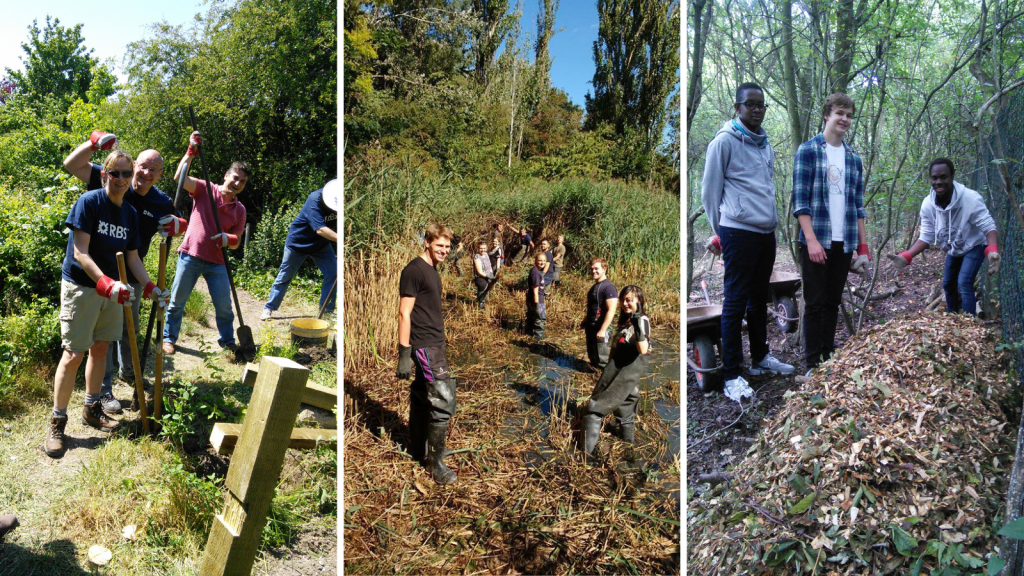
Looking ahead, the next generation of environmentalists must expand their perspective beyond individual sites. They should consider how their actions influence or support the broader Pan-London landscape. It’s crucial to avoid isolationism and actively collaborate with new developments.
TCV has already embarked on such collaborative efforts, notably in Enfield and at Stave Hill, influencing green infrastructure in the area. The focus should be on understanding how this infrastructure supports biodiversity on existing sites and contributes to enhancing biodiversity on new sites. The concept of biodiversity needs to extend beyond physical boundaries, requiring a more comprehensive approach.
What key lessons or insights have you gained from your long and dedicated career in environmental conservation that you believe can empower and inspire others pursuing careers in this sector?
Talk to everyone. Listen to everyone and realise that you can learn from everybody. You can learn from the newest volunteer, a new way of thinking, a new way of doing. And I think what I’ve really liked about this, this whole journey, is that there have been so many supportive people talking to me, sharing knowledge. There have been so many volunteers coming in with skills that are perhaps not conservation-based skills that I thought, well, that’s a good trick and it’s just been that whole learning curve – I have worked with some absolutely amazing people.
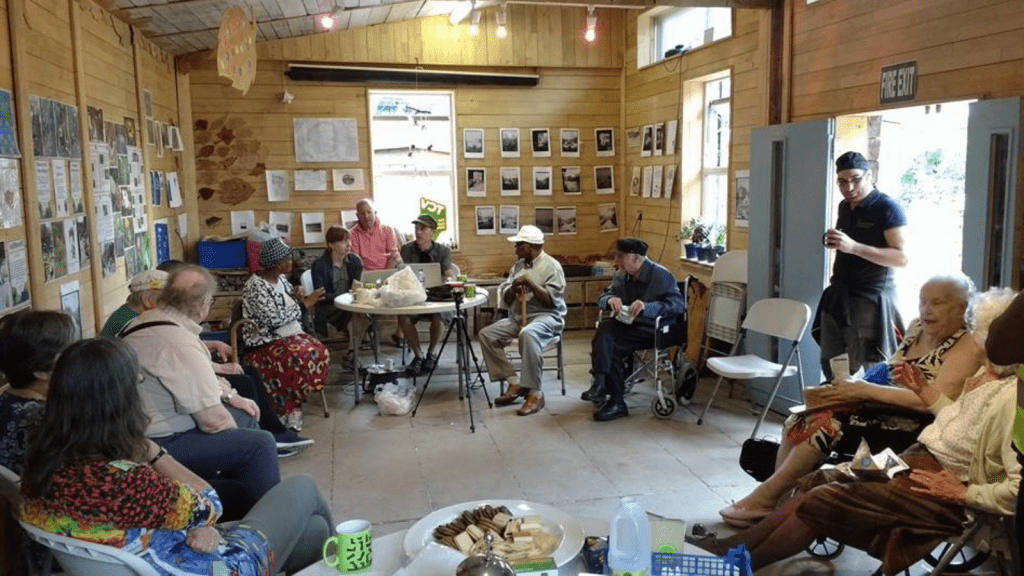
I have to give a shout-out to the Urban Ecology Team and the wider London team. I have never, ever, ever asked somebody for help and had a flat-out refusal. If they can’t help, they’ve always said, “I can’t do it, but I know somebody who can.” I have always been supported in TCV, and that’s what I find so great because sometimes we all know the job can be hard. But with that support, you really can just about conquer every challenge.
How does TCV’s corporate partnership program support biodiversity initiatives in London?
Our collaboration with corporate partners at Stave Hill began slightly over 20 years ago, with NatWest being among our first clients. Initially, corporate volunteers engaged in general conservation activities, contributing wherever needed. However, as our national corporate program expanded, we recognized the potential to leverage corporate teams not just for daily labour but to actively participate in site development and advancement.
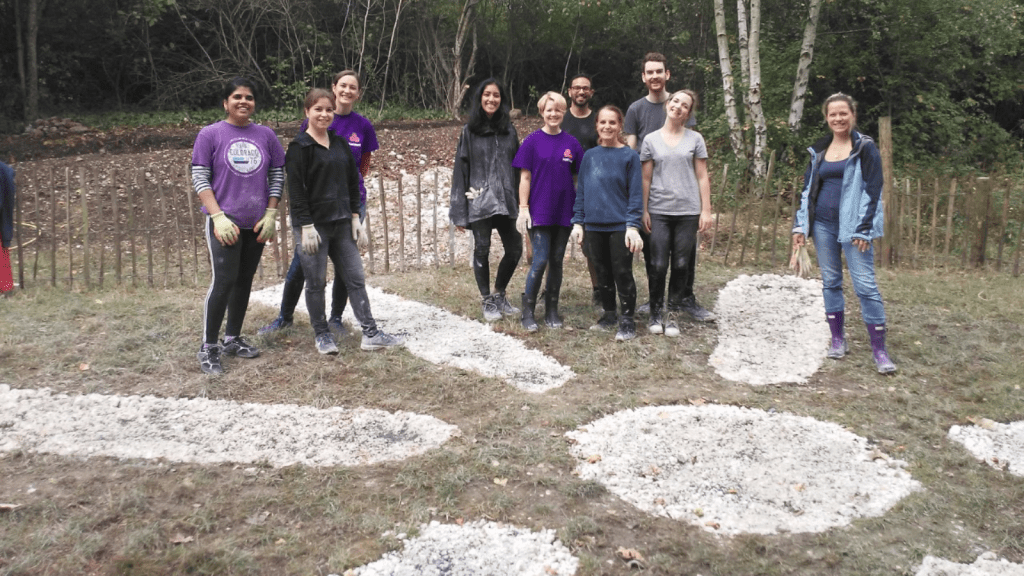
This shift in approach has significantly propelled Stave Hill’s rapid development on the conservation front. Despite being a relatively young site, the discovery of new species and the establishment of diverse habitats owes much to the impact of corporate teams. Their involvement has propelled us forward, pushing the boundaries of what Stave Hill can achieve. The success of the TCV corporate program has been gratifying, attracting new teams consistently, such as Investec in a couple of weeks. This ongoing support is invaluable, allowing us to continually enhance the site, increasing biodiversity for this London community to witness and enjoy.
What exciting future projects does TCV have in store for Stave Hill Ecology Park, and how will these initiatives further enhance biodiversity in the urban landscape?
Our new 20-year plan focuses on creating a fully interconnected and integrated landscape. Centred around the Rotherhithe Peninsula, this vision encompasses Stave Hill Ecology Park at the core, surrounded by the 24 acres of Russia Dock Woodlands, the 2.5 acres of Lavender Pond Nature Reserve at the top, Surrey Docks Farm on the side, and various green islands scattered across the peninsula. Additionally, the new 53-acre New Town Centre development at the base of the peninsula with its planned green infrastructure plays a crucial role in this ambitious plan.
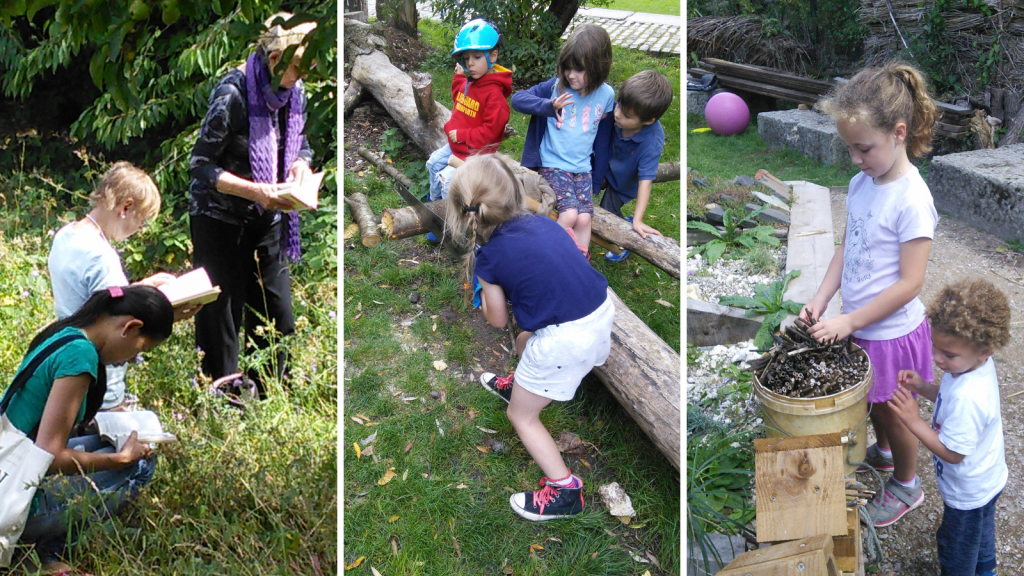
Our goal is to establish seamless connections among these diverse areas, forming a comprehensive landscape as biodiverse as Stave Hill Ecology Park. While Stave Hill could currently attain metropolitan significance in nature conservation, our aim is more extensive. We aspire to create a 300-acre interconnected, biodiverse landscape, elevating the peninsula to metropolitan significance in the realm of nature conservation.
Crucially, key stakeholders, including developers Art Invest and British Land, Surrey Docks Farm, Lavender Pond Nature Reserve, Stave Hill Ecology Park, Russia Dock Woodland, Southwark Park, and the South Dock Marina and Boat Owners Association, have united as a forum. This collaborative effort is dedicated to establishing green connections – connections between places, connections between people and places. That is what we’re working on and that’s what we’re going to achieve in 20 years’ time, a Metropolitan site of significance.
Any final thoughts?
I still can’t believe it’s been 35 years. I really can’t. A local resident shared a memory with me recently, reminiscing about when I first started, mentioning “You wouldn’t say ‘boo’ to a goose. Now, I see you standing in front of a team of 100 corporate volunteers, confidently giving a talk!”
_________________________________________
Women in Conservation: Lucy – Boosting Biodiversity and Connecting Communities in Leeds
Women in Conservation: Cydney – kickstarting a career in the environment sector
_________________________________________
Are you looking for a job in conservation or a volunteering role to kick-start your career? Be sure to visit our web pages to find out more about various roles available in your area.
Keep up to date with the latest news and activities from The Conservation Volunteers by following us on Twitter, Facebook, LinkedIn and Instagram. You can also sign up to receive our Greenzine newsletter for more ways to get involved.
